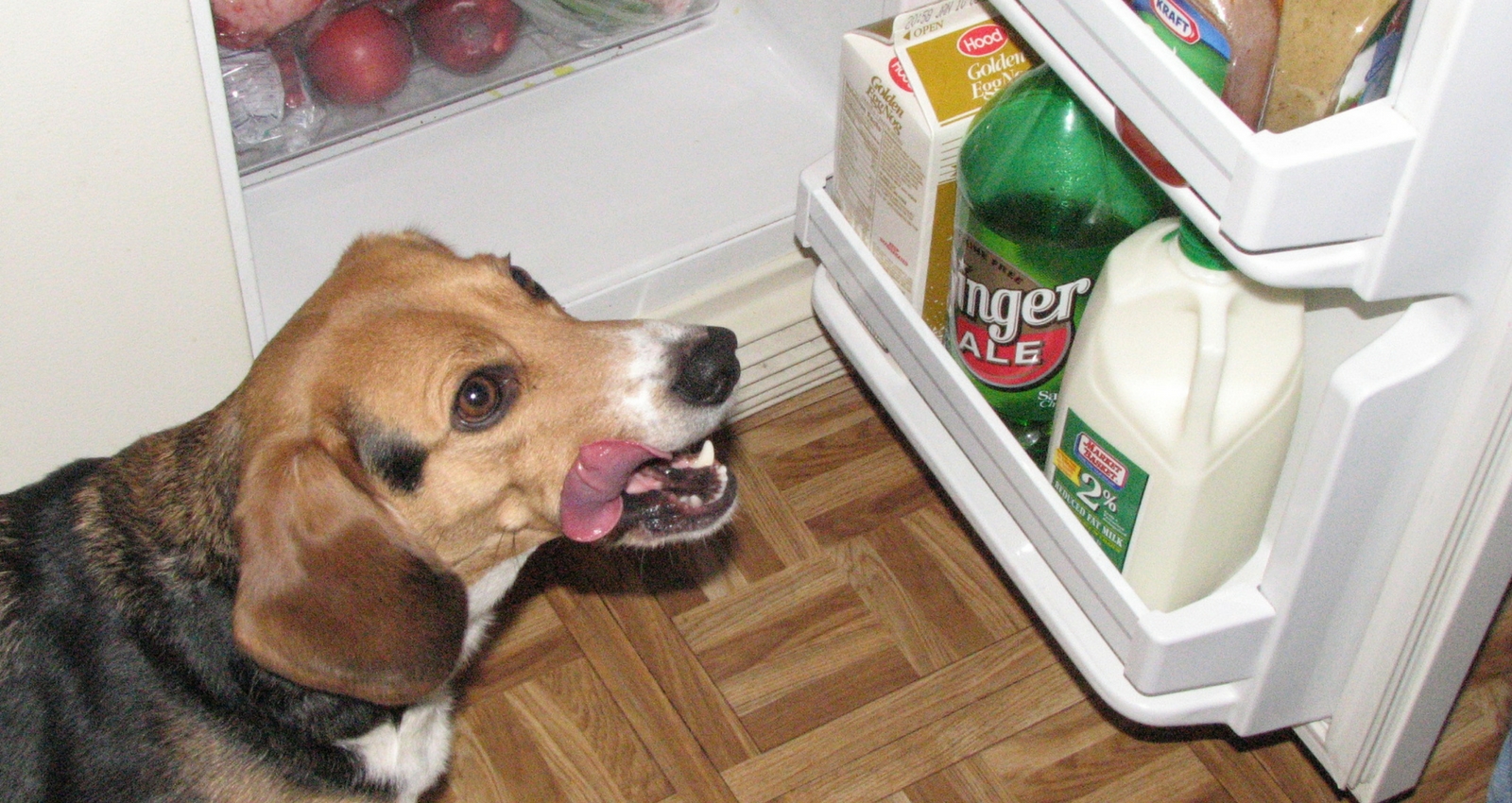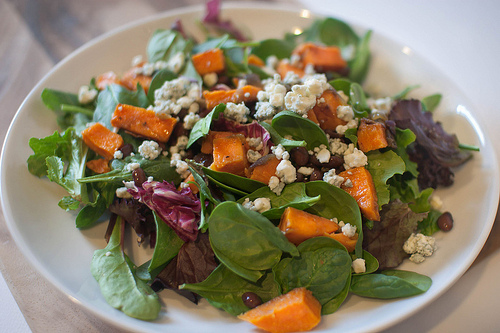What’s Holding You Back From Home Cooking Meals For Your Dogs?

Lately it seems that dog owners everywhere have a ton of healthy, natural, and organic commercial food options for their pets. With such a huge increase in the availability of pre-made “healthy” food for pets, you may be thinking that there’s no need for fresh home-cooked and home-prepared meals anymore. I don’t necessarily believe that to be the case though.
Here’s a list of the most common reasons people give for not wanting to prepare fresh cooked meals for their dogs. I’ve also included some questions and comments from a recent conversation I had with a curious dog owner who inquired about commercially-made “natural” pet foods, easy cooking options, and the challenges of preparing fresh food.
Reason #1: There are already many “good” pre-made pet foods on the market.
“Is there any brand of dry dog food that you think is better than the rest? I know you’re all about cooking food, but some people are not willing to do that, but are willing to buy the best brand of food possible.”
There are a handful of brands that I recommend, but I find myself constantly having to reassess that list over time. It seems that many pet food companies become susceptible to product recalls once the “brand” becomes popular and established. As the business grows and increases, the expenses to produce the foods increase, and all too often, the ingredients or the production process are the first areas to be compromised in terms of quality. So although these companies claim to be healthier options, you’ll still see pets having dietary issues as a result of these foods.
It’s also important to note that each animal has different needs, and pre-made diets don’t always meet those needs. Commercially made dog or cat food supplies nutrition for the “generic” pet…not necessarily your own. And don’t forget, you will not find Love in a bag or can of pet food. Love begins in your kitchen, with meals prepared with good intentions and an understanding of the individual needs of each animal.
The bottom line is that preparing your own dog food for your pet is the most reliable way to ensure that your pet is getting a healthy and nutritious diet.
“I can see how true that would be if people were feeding dogs the same low-quality kibble day after day, but it seems like now there are some pretty good human-grade dog food brands. For instance, I found this brand from New Zealand that uses free range meats and and great fresh ingredients – all ingredients from NZ, though it is expensive.”
Yes and no. Imagine eating a nutritional bar three times a day, every day for years. You really wouldn’t be very healthy (even though the nutritional bars claim to be a good source of vitamins and minerals and a good substitute for a meal).
Here’s what you need to consider with commercially prepared foods:
- Where is the fresh food? Fresh vegetables?
- Who formulated the ingredients? What was their education? What is their experience with nutrition?
- How long has the food been sitting in the can or sitting on the shelf?
- How many miles of fossil fuels were wasted shipping the food (for example, from New Zealand to Los Angeles, USA)?
- Is it produced by people who love the people or pets they are cooking for? (If not, the food lacks “mana” or Qi … energy)
The sad truth is that for every $30 spent on dog food, only about 10 percent (roughly three dollars) goes towards the expenses for the ingredients. The rest of the price mark-up goes towards expenses like shipping, distribution, packaging, wages, and then also includes a margin for profits.
“Do you believe that high-quality human-grade pre-made food also makes dogs sick over time?”
Absolutely. Just try it yourself, by only eating processed foods (meals from a box, can, or bag) and see what problems develop. (Okay, of course, I don’t actually encourage you to try this, but I do want you to think about what it would be like to eat this way).
Another problem in the industry is that food labels and descriptors aren’t regulated or defined. “High-quality” or “human-grade” could mean anything. The same goes for the label “natural.” It just doesn’t have any meaning without an industry standard to back it up. Marketers rely on buzz words like those to create assumptions in the minds of pet owners who will then purchase these foods under false pretenses. Scary, right?!
Reason #2: I don’t have time to cook.
“Most people I know don’t have time to cook for themselves, much less cook for their dogs. How can anyone manage cooking for their pets while maintaining a busy life?”

Wouldn’t you rather have fresh meals like this instead of a nutrition bar?
It’s a mind set that is contagious. There is always time to prepare food and enjoy a healthy meal – it really depends on priorities. As I’ve mentioned before, many of the recipes I’ve created over the years can be shared with people too (for example, Stuffed Kabocha Squash with Lamb, Rice, and Veggies…roasted in the oven). So cooking for your pets doesn’t have to mean double the work each day. You can easily cook a single meal that will be healthy and nutritious for both people and pets to eat.
It seems like a cultural shift – we spend many hours in front of a computer each day (often doing leisurely activities like checking out Facebook and Twitter, reading blogs, or watching videos), yet claim to have no time to do the activities that support a healthy body and a healthy life. People who claim to have no time to cook are usually the same people who claim to have no time to exercise, meditate, be active outdoors, eat regular meals daily, or sleep for 8 hours a day.
“Well, what about folks with big dogs? Feeding large dogs would require more time, money and effort.”
Exactly right. But it is a necessary commitment. People who own big dogs need to remember that it is like having to feed another human member of the family. Large dogs will consume much more food than smaller dogs, and that is something pet owners need to consider before adopting a large dog into their family. It’s just not fair to compromise a large dog’s health because you can’t afford to feed them the kind of food they really need (which includes lots of fresh meat).
Reason #3: I’m afraid I’ll mess it up, or the food won’t be nutritionally balanced.
“Isn’t home cooking pet food unsafe? Home-cooked meals don’t contain all the nutrients and vitamins like my dog’s bag of scientifically-formulated kibble. Aren’t there risks of food poisoning and contamination?”
This is another common misconception perpetuated by “experts” who want to dis-empower pet owners and force them to rely solely on commercially available diets. If you’ve read my book or had a consultation with me, you know that I teach people how to ensure that each and every meal is balanced and healthy. Part of this balance relies on the idea of feeding a variety of recipes, foods, and meals. In regards to food poisoning or contamination – preparing food for your pets is as easy as preparing a meal for yourself. Cook things thoroughly (unless instructed otherwise), keep the kitchen clean, and buy the same quality of meats and vegetables that you’d buy for your own meals (but you don’t need to buy expensive cuts of meat).
Reason #4: I want an easier option.
“In my opinion, people want to do the best for their dogs and need an easy option that makes feeding them healthy food simple to do. Unfortunately, it’s just not obvious how to go about that.”
As with many things in life, the “easy” option isn’t always the best option, and the obvious answer is often right in front of us.
As many of you know, I am fortunate to live on the island of Kauai in Hawaii. Over the last several decades, my community has seen an increase in the interest of young people (20 – 40 year olds) living here that want to live more sustainably, reduce their environmental footprint, and learn more about sustainable agriculture and growing their own food. These amazing individuals have jobs and families, and yet balance their lives with also having the time to cultivate seed exchanges between farmers and produce sharing so that excess food doesn’t go to waste. They are very inspiring, and serve as a good reminder that it is possible to live healthy, contribute to your community, and maintain an active life in the 21st century.
Again with regards to time and the sense of “busy-ness,” one has to look at where his or her energy is being directed daily. On a deeper level:
- How much of your day or daily activities actually contribute to the health and welfare of your family?
- Are there ways to simplify your life and create more time for yourself to do things like cook healthy meals?
Our society tends to spend a lot of time doing things that may not be very constructive (like watching hours of TV each night). A great majority of us are also working long hours in unfulfilling jobs, or driving long hours to get to jobs / grocery stores / etc. It takes a new mindset to make it all work. It is possible to make things work, but only if you have a supportive environment that allows you to do so (this includes having an open mind as well, and not falling back on old thought patterns that create limitations or excuses).
Who knew the concept of fresh food could be so thought-provoking, eh?
Just remember to consider how much better your life could be by eating healthier food, and taking the time to prepare it. Food is sacred, and in our culture of abundance, it is a gift. Appreciate it accordingly. Live food enlivens.
Photos via Christina Welsh
